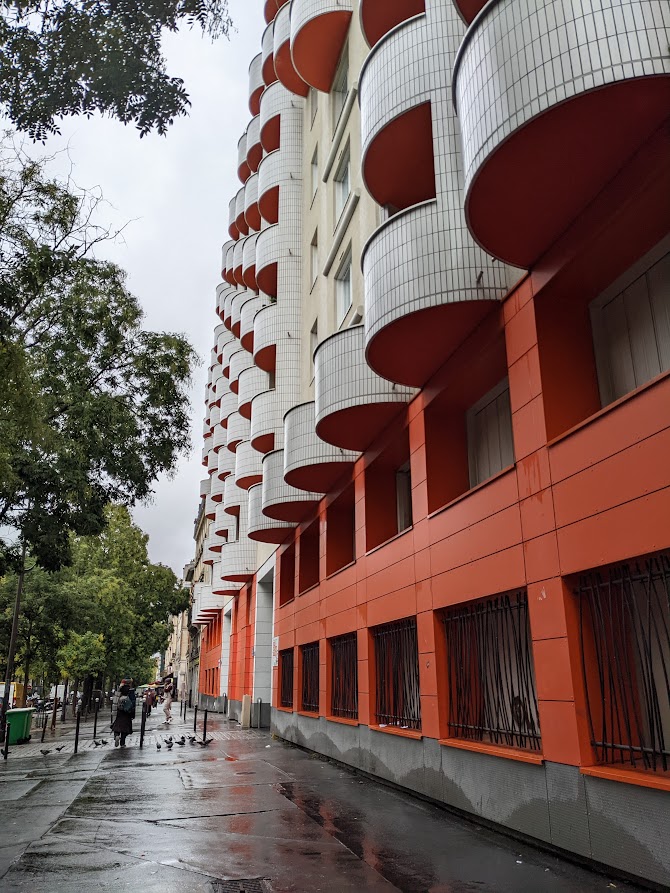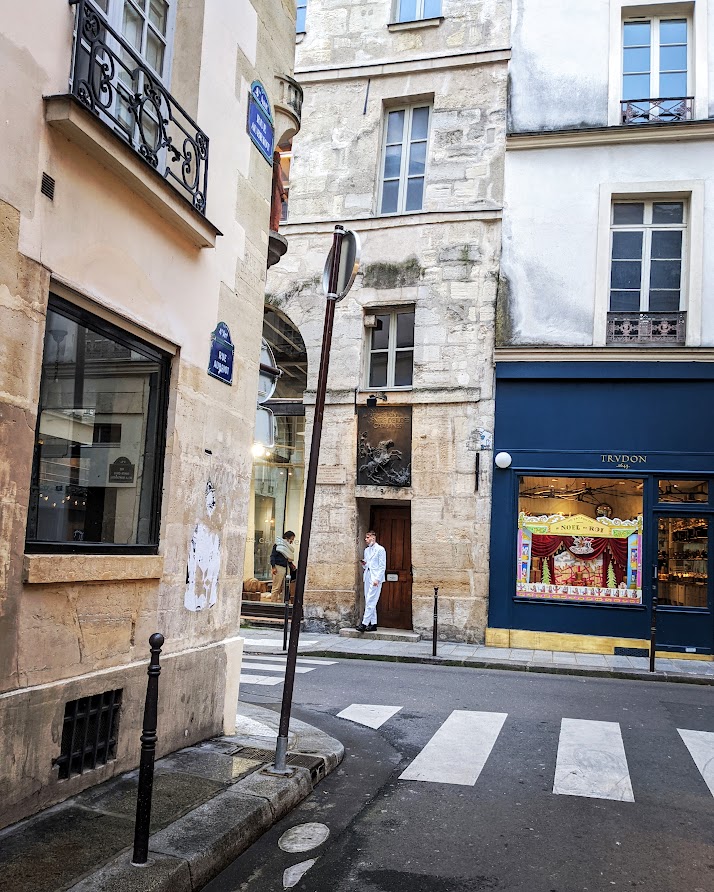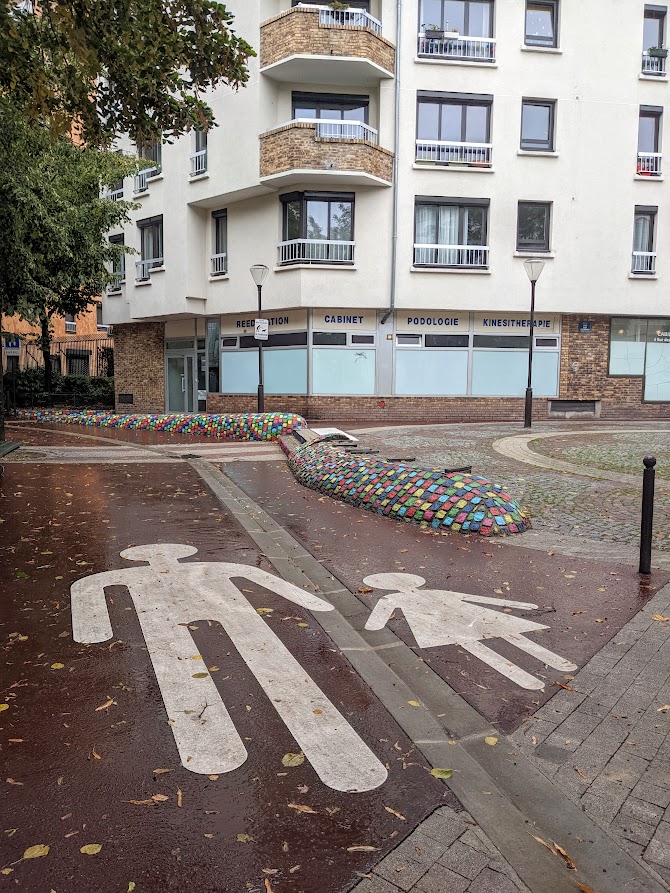Mapping the Ebb and Flow of Psychogeography
In this series I explore the ebb and flow of geographical ideas, particularly how they move around the world. As with all innovations, concepts sometimes lose traction over time, seem to get buried in dusty libraries and then find themselves revived for unexpected reasons. The topic for this series is the concept of psychogeography. We will travel from Paris in the 1960s to the UK in the 1990s and then to the wider world in the 2020s.

Across these four blog articles, I will show how other writers and researchers have used this set of concepts and give some examples from my own research and teaching. As we work towards the fourth article, we will find out how the internet and the global lockdowns gave new energy and direction to this most elusive concept.
Is psychogeography a fusion of psychology and geography?
Broadly speaking we can assume that this practice lies between that which studies the psyche and the mind and that which focuses on space and place. However, it is worth stressing that we are mostly concerned with an innovation within geography, particularly of the humanistic kind, rather than a branch of psychology. This discipline is therefore on the qualitative side of social research and, as we will discover from this series, relies on its relationship with creative practice and the arts. The politics of architecture and urbanism of post-war Europe also feature. Although some connections with the more quantitative discipline of environmental psychology exist, these two concepts are more like distant cousins than siblings. We will explore the opening that psychogeography occupies within the qualitative side of human geography before briefly returning to the psychological connections.
Openings within human geography
Yi-Fu Tuan offers an excellent set of ideas in Space and Place: The Perspective of Experience, his ground-breaking 1977 book about human geography:

The word ‘experience’ is critical to Tuan’s thinking. His idea helps us to sense that geographical spaces can increase in their subjective meaning for an individual. For example, one person starts to call a certain house or neighborhood their home. With the passing of time, and the gaining of various experience(s), spaces therefore become places. Another person may regard a town or landscape as a favored place to visit on holiday. Again, these spaces become a place in people’s minds. Conversely, other individuals may have no connection to these latter locations and may not even register them at all. This leads us to the concept of place attachment and allows us to reconsider why environmental psychology, though a more distant relation, but is still important.
Is there a link back to environmental psychology?
By defining connections to homes, neighborhoods, and holiday destinations we come closer to the place attachment theories. There is some useful background to place attachment theories in an open-access chapter from a book about office environments. For example, the authors reference dimensions of people and place, but focus mostly on the psychological process (emotions, behavior, cognition) through which attachments are developed. Some very useful research comes from focusing on specific cases, including how people manage the loss of attachments. However, new ideas emerge when we stop looking from the individual’s perspective and think geographically from the space itself.
A good example is Edward Casey’s writing on geography and philosophy with the argument that space can thicken with more ‘doing and making.’ There is a useful counter effect that space thins with less activity. The words ‘doing’ and ‘making’ connect to Michel de Certeau’s important 1984 book The Practice of Everyday Life. Tuan would have called the same phenomenon ‘experience’. Another act of thickening, though perhaps a mixed metaphor, is the idea of ‘soaking’ from Nigel Thrift’s book Non-Representational Theory. Altogether these concepts get us closer to the way that psychogeography gives agency to spaces and places themselves.

In the final part of this blog, we meet French thinker Guy Debord and a wider group called the Situationist International (SI). The context of their work was to explore everyday life, such as in the streets of Paris photographed above.
Post-war Europe: Places and spaces going through the space
Through the 1950s and 1960s large parts of towns and cities were being reimagined and reorganized around new forces, such as the car, high-rise buildings and bigger shopping centers. This even happened in smaller places like Newport in Wales, which has been the subject of my own research. Older buildings were being demolished and street layouts changed. The SI called this a process of ‘banalization’ – meaning to make places more routine and less romantic. Moreover, the SI were interested in the way that symbols of mass media were taking people’s eyes of what was happening on the ground and leading them towards what they called The Spectacle. As such, the art of psychogeography would be part of combatting these changes to everyday life. In 1955 Debord defined psychogeography as:
There are some points to consider from this latter definition. Debord mentions the geographical environment, what we have so far called space and place, and links it to the psychological dimension. He implies that spaces influence the way that people act and behave. However, it is important to stop and think about the being consciously organized or not. This suggests that people develop subconscious, or even unconscious, relationships with spaces. The not knowing why or how these relationships exist is important to the SI’s psychogeographic practice and the terminology that they developed.
Towards a psychogeographical method
The SI’s toolbox was to move through places and take a walking dérive – translated as ‘drift’ in English – to find the form or shape of a given space. To decide on a direction these drifts rely on playful elements, such as tossing dice or following maps of one place to navigate another. These methods attempt to override what is in our conscious minds, such as the impulses created by The Spectacle, and to engage with the subconscious. The third blog in this series provides some examples of how people still use these principles today. The length of the dérive is hard to specify, but its followers will inevitably encounter a lessening of the effect. The ending of the drift is called the détournement and is where a new dérive may make itself present. Sometimes nothing happens.

Inevitably one has to let go of many apprehensions in order to engage with these ideas, which is a reason why many people did not take them seriously. Moreover, the practice was potentially too rooted in the politics of the time. Spatial thinker Henri Lefebvre commented that the SI often sought the ‘unitary urbanism’ which is perhaps portrayed in earlier photos of the 3rd arrondissement. This is a street unchanged over centuries. Today these typify popular tourism sites such the area around Notre Dame Cathedral. As such, this space contrasts with the type of banal or routine streetscape created in other neighborhoods, such as pictured below in the 19th arrondissement.
The Situationist International dissolved in the early 1970s without a scientific psychogeographic method and much of the momentum was lost. Moreover, cities ranging in size from Newport to Paris were changed forever and went in the direction of concrete and tarmac. The next blog picks up on a new wave of psychogeographical thinking which emerged amidst writers across the English Channel in the final decades of the twentieth century. To some degree people accepted that motorways and high-rise buildings created new opportunities. As they say in French: plus ça change…
The series so far
Mapping the Ebb and Flow of Psychogeography | Above
How British Literary Psychogeography Offers Possibilities for Researchers | Here we look at the years after World War 2 when basic principles re-emerged as a new form of psychogeography in the British Isles. This form would be less political than the work of Debord, at least on the surface, and would be championed by poets, writers of historical fiction and other forms of literature.
Psychogeography Becomes More Accessible — and Goes Online | Here we explain how practices such as the dérive have been simplified and used by a wide variety of people. Moreover, the lockdown(s) of 2020 encouraged people to think differently about how to use technologies.



























































































